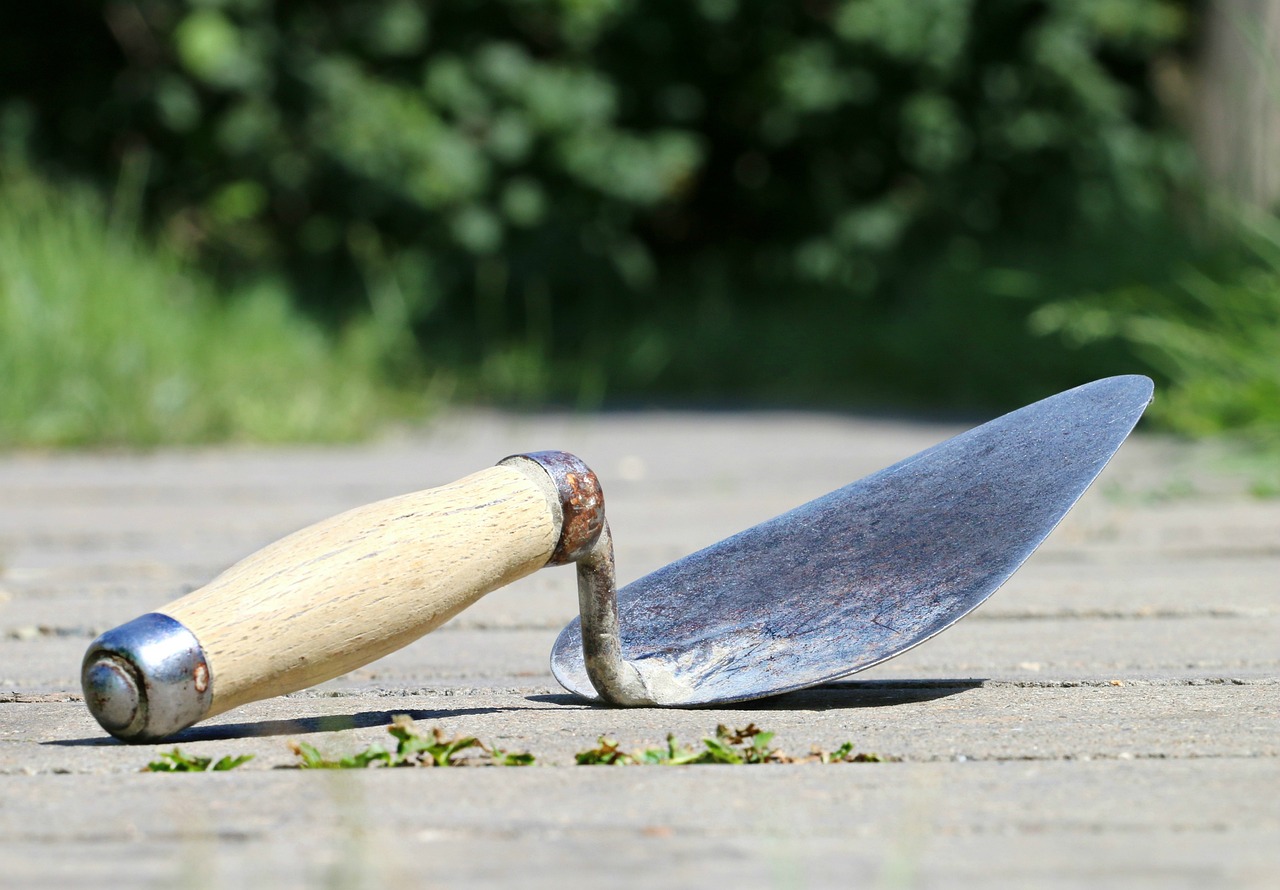Deadheading flowers is the practice of removing spent blooms to encourage new growth and prolong flowering. This simple gardening technique not only enhances the appearance of your plants but also fosters a healthier garden by redirecting energy from seed production to the development of new flowers.
Understanding Deadheading

Deadheading is an essential gardening technique that promotes continuous blooms in flowering plants. When flowers fade, they produce seeds which can divert a plant’s energy away from producing more blossoms. By removing these spent blooms, gardeners can help plants focus their resources on creating new flowers instead of seeds. This not only extends the blooming period but also keeps your garden looking vibrant and lush.
Many gardeners may overlook the importance of deadheading, thinking it is a trivial task. However, understanding how and when to deadhead can significantly impact the health and beauty of your garden. Different plants have different requirements for deadheading, making it crucial to learn the specific needs of your flower varieties.
Benefits of Deadheading
There are several advantages to incorporating deadheading into your gardening routine. Here are some key benefits:
- Extended Blooming Period: Regularly removing spent flowers can lead to a longer flowering season.
- Improved Plant Health: By preventing seed production, plants can conserve energy for growth and flowering.
- Enhanced Appearance: Deadheading keeps plants looking tidy and vibrant, improving the overall aesthetics of your garden.
- Encouraged New Growth: Many plants respond to deadheading by producing new shoots and flowers more quickly.
When to Deadhead
The timing of deadheading is crucial for maximizing its effectiveness. Generally, it is best to deadhead flowers as soon as they begin to fade. This ensures that the plant does not waste energy on seed production. However, different types of plants may have varying deadheading schedules.
| Plant Type | Best Time to Deadhead |
|---|---|
| Annuals | As soon as blooms fade |
| Perennials | After first bloom and again in mid-season |
| Roses | When petals drop or begin to wilt |
Some gardeners may choose to wait until all blooms on a plant have faded before deadheading. While this approach can be effective, it may not yield the same benefits in terms of extended blooming. Observing your plants closely will help you determine the best approach.
Techniques for Deadheading
Knowing how to deadhead correctly is essential for achieving the best results. Here are some effective techniques:
- Pinching: Use your fingers to pinch off spent blooms at the base of the flower stem.
- Pruning Shears: For larger blooms or woody stems, use clean pruning shears to make a clean cut just above a leaf node.
- Cutting Back: For perennials, consider cutting back stems after blooming to promote bushier growth.
It is important to ensure that your tools are clean and sharp. This prevents any potential damage to the plant and reduces the risk of disease transfer. Regular deadheading can become a rewarding part of your gardening routine, encouraging not only beautiful blooms but also a deeper connection with nature.
Choosing the Right Plants for Deadheading
Not all flowers require deadheading, and some may not benefit from it as much as others. Selecting the right plants for your garden can enhance your deadheading efforts, ensuring a vibrant and continuous bloom throughout the growing season. Below are some popular flowers that respond well to deadheading.
Annuals
Annuals are typically the stars of summer gardens. They bloom profusely but often require regular maintenance to keep them looking their best.
- Petunias: This popular annual produces beautiful blooms that can last all summer long with proper deadheading.
- Marigolds: Known for their vibrant colors, marigolds benefit from regular removal of faded flowers to encourage new growth.
- Geraniums: Deadheading geraniums can help extend their flowering season and maintain lush foliage.
Perennials
Perennials return year after year, making them a valuable addition to any garden. Some perennials thrive on deadheading to promote further blooms.
- Echinacea (Coneflower): Removing spent flowers encourages more blooms and can improve the plant’s overall health.
- Daylilies: Removing individual spent flowers can help prevent the plant from focusing energy on seed production.
- Black-eyed Susans: Regular deadheading will keep these cheerful blooms coming all season long.
The Timing of Deadheading
The timing of your deadheading efforts can greatly affect the success of your garden blooms. While many flowers benefit from immediate deadheading after blooming, some plants have specific timelines that yield better results.
Seasonal Considerations
Understanding the seasonal patterns of your plants can provide insights into when to deadhead. Here are some tips:
- Early Spring Bloomers: For plants that bloom in early spring, like daffodils and tulips, deadhead after the flowers have faded but allow the foliage to die back naturally to feed the bulb for next year.
- Summer Bloomers: Annuals and many perennials bloom during summer. Regularly check these plants every couple of weeks for spent flowers.
- Fall Bloomers: For late-season bloomers like asters, wait until the blooming period is over before doing extensive deadheading. This allows them to set seeds for future growth.
Weather Conditions
Weather can also impact when you should deadhead your plants. Rainy or humid conditions may cause flowers to fade more quickly. It is important to monitor your garden closely during such periods:
- After Rain: Flowers may droop or wilt after heavy rain. Check for spent blooms after storms and deadhead as needed.
- Drought Conditions: In dry spells, some plants may focus on survival rather than blooming. Reducing stress through proper watering can help maintain blooms, encouraging timely deadheading.
Common Mistakes in Deadheading
Despite its benefits, many gardeners make mistakes while deadheading that can hinder plant growth. Being aware of these common pitfalls can help you avoid them and achieve better results in your garden.
- Not Deadheading Enough: Failing to remove spent blooms regularly can lead to a decline in flowering. Make it a habit to check your plants weekly during the growing season.
- Improper Technique: Using dull tools or not cutting at the right spot can damage the plant. Always ensure tools are sharp and clean.
- Ignoring Different Plant Needs: Each plant has unique requirements for deadheading. Researching specific varieties will help you understand their needs better.
A successful deadheading routine can transform your garden into a stunning display of continuous blooms. By selecting the right plants, timing your efforts appropriately, and avoiding common mistakes, you can master this essential gardening technique and enjoy a flourishing landscape all season long.

Tools and Equipment for Effective Deadheading

Having the right tools can make deadheading more efficient and enjoyable. There are several essential tools that every gardener should consider for this task. Using appropriate equipment not only saves time but also minimizes damage to the plants.
Essential Tools
Here are some of the key tools that can make deadheading easier:
- Pruning Shears: A sharp pair of pruning shears is invaluable for cutting back larger stems. Look for a lightweight model that is comfortable to handle.
- Hand Pruners: Ideal for smaller plants, hand pruners allow for precise cuts and are easy to maneuver in tight spaces.
- Gardening Gloves: Wearing gloves protects your hands from thorns or irritants while providing a better grip on tools.
- Trowel: A small trowel can be handy for digging out any unwanted plant parts, including roots of spent flowers when necessary.
Optional Tools
Additionally, some optional tools can enhance your deadheading experience:
- Scissors: For delicate flowers with thin stems, a pair of scissors can provide a clean cut without crushing the stem.
- Garden Waste Bag: Having a designated bag for collecting removed blooms helps keep your garden tidy and makes cleanup easier.
- Container for Composting: If you compost, consider having a container nearby to collect organic waste from deadheading.
The Best Practices for Deadheading
Implementing best practices while deadheading can enhance your garden’s growth and appearance. Here are some tips to ensure effective deadheading:
Regular Monitoring
Make it a routine to inspect your plants regularly. By paying close attention, you can catch spent blooms early and prevent energy waste. Aim to check your plants at least once a week during the blooming season. This allows you to promptly remove any faded flowers and maintain plant vigor.
Technique Variation by Species
Different plants may require varying techniques for deadheading. Familiarizing yourself with the specific needs of each species can lead to better results:
- Pinching vs. Cutting: For soft-stemmed flowers, pinching off blooms may be sufficient. In contrast, woody stems may require cuts with pruning shears.
- Location of Cut: Always cut above a leaf node or lateral bud to encourage new growth. This helps the plant redirect energy efficiently.
- Seasonal Adjustments: Adapt your deadheading practices based on the season and the plant’s growth cycle. For example, some perennials may benefit from more extensive cutting back in late summer.
Understanding Plant Responses to Deadheading
Each plant reacts differently to deadheading, and understanding these responses can help optimize your gardening strategy. Here are some common reactions:
Increased Blooms
Many flowering plants respond positively to deadheading by producing more blooms. This is particularly true for annuals and some perennials, which can continue to flower throughout the season with proper care.
Enhanced Foliage Growth
In addition to promoting blooms, deadheading can lead to healthier foliage. When spent flowers are removed, plants can focus their energy on leaf production, resulting in lush, vibrant foliage that complements the flowers.
Pest Management
Regular deadheading can also help control pests. By removing spent blooms, you reduce the likelihood of attracting unwanted insects that may be drawn to decaying flowers or seed heads. Keeping plants tidy creates an inhospitable environment for pests.
Cultivating a Routine for Deadheading

Establishing a regular routine for deadheading can greatly benefit your gardening efforts. Here are some steps to create an effective deadheading schedule:
- Create a Weekly Schedule: Set aside time each week specifically for deadheading tasks. This dedicated time helps ensure that you do not overlook this important activity.
- Keep Records: If you have numerous plant varieties, consider keeping a simple record of when each type needs deadheading. This will help you remember specific needs and schedules.
- Involve Family or Friends: If gardening is a shared interest, involve others in the process. This not only makes the task more enjoyable but also ensures that all areas of your garden receive attention.
A systematic approach to deadheading ensures that your plants remain healthy and continue to produce beautiful blooms throughout the growing season. By integrating these practices into your gardening routine, you will cultivate a thriving and visually appealing garden.
Advanced Tips for Successful Deadheading
While the basic techniques for deadheading can significantly enhance your garden’s appearance, there are advanced strategies that can take your gardening skills to the next level. Implementing these tips can lead to even more vibrant and healthier blooms.
Experiment with Techniques
Deadheading does not have to be a one-size-fits-all approach. Consider experimenting with different techniques to see how your plants respond:
- Different Cutting Heights: Try cutting at different heights on the stem to observe which height encourages more blooms.
- Time of Day: Deadheading in the early morning or late evening can help minimize stress on plants, as temperatures are cooler.
- Combination of Techniques: Use both pinching and cutting methods on the same plant to determine which yields better results for each bloom type.
Integrate Companion Planting
Companion planting can complement your deadheading efforts by creating a more diverse and thriving ecosystem in your garden. Some plants naturally deter pests or improve soil health, which benefits flowering plants. Here are a few examples:
- Nasturtiums: These vibrant flowers attract beneficial insects while deterring aphids and other pests.
- Basil: Known for its culinary uses, basil can also deter certain pests that affect flowers.
- Marigolds: Their strong scent repels many harmful insects and can also attract pollinators.
Seasonal Plant Rotation
Rotating your flower choices seasonally can keep your garden looking fresh while reducing pest and disease issues. By switching out plants, you allow the soil to recover while preventing the buildup of pests that might affect specific flowers.
Understanding Plant Lifecycles
A deeper understanding of plant lifecycles can enhance your deadheading strategy. Each plant has a unique lifecycle, and knowing when they bloom and how long their flowering period lasts can inform your deadheading practices:
- Annuals: These plants complete their lifecycle in a single growing season. Regular deadheading can maximize their blooming potential within that timeframe.
- Perennials: These return each year. Knowing when they bloom allows you to time deadheading for optimal results, ensuring that new blooms appear when old ones fade.
- Biennials: These plants generally take two years to complete their lifecycle. Deadheading in the first year encourages growth for the following year’s blooms.
Final Thoughts
Mastering the art of deadheading flowers is a rewarding pursuit that enhances the beauty and longevity of your garden. By employing effective deadheading techniques, choosing the right plants, and maintaining a diligent schedule, you can create a continuous display of vibrant blooms. Understanding each plant’s unique needs, experimenting with techniques, and integrating advanced gardening strategies will further elevate your gardening experience.
Ultimately, deadheading is more than just a chore; it is an opportunity to connect with nature, observe plant behavior, and cultivate a thriving environment in your garden. As you refine your skills and enjoy the fruits of your labor, you will find that the effort invested in deadheading pays off with a stunning array of flowers that brighten your outdoor space throughout the growing season.
With the knowledge and techniques shared in this article, you are well-equipped to embrace the practice of deadheading. Dive into your garden with confidence, knowing that each bloom you encourage contributes to a more beautiful, healthy landscape.
